This calculation sheet is Singapore Standard.
Enter input data to the Green Text & No need to the Red Text.
1. In the Tank capacity, It depends on your country code.
2. In Duration, It depends on your design.
3. In Pipe Size, you must know pipe selection
4. Velocity & Fraction loss can be from the Friction Loss Chart
5. You must find “Effective Pipe Length” from the Drawing.
6. The result will be shown below.
Preview Calculation Sheet
Transfer Pump Size Calculation Sheet can be download below the link.
To get equivalent length see below the table.
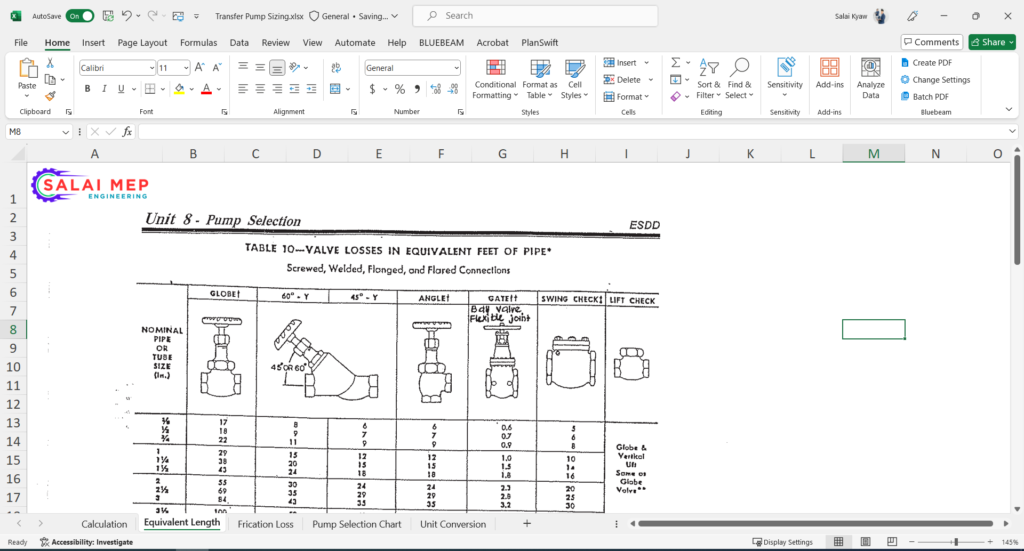
If you know Pipe Size & Flow Rate, You can get the value of Fraction Loss
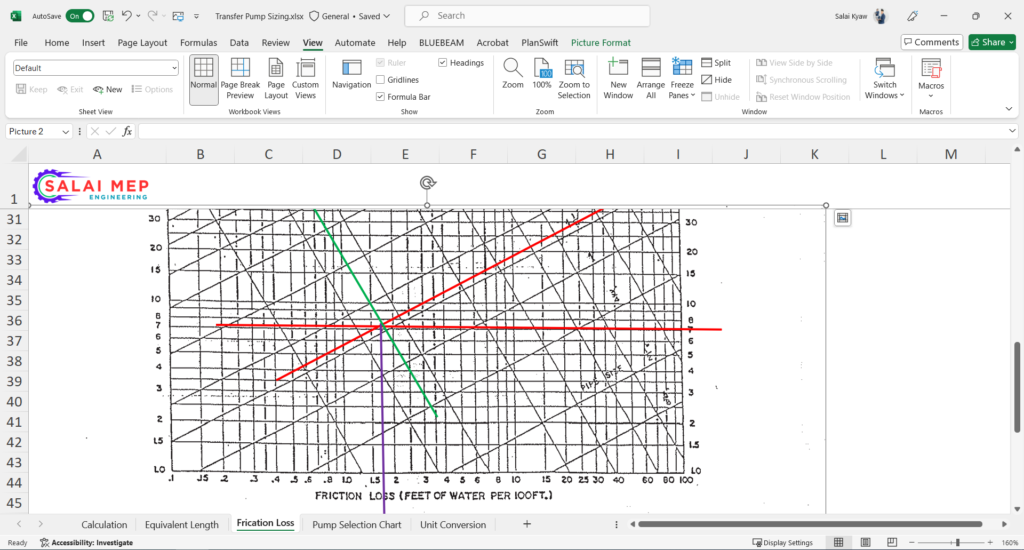
If you know, pump head & flow rate, you can select pump size below the chart.
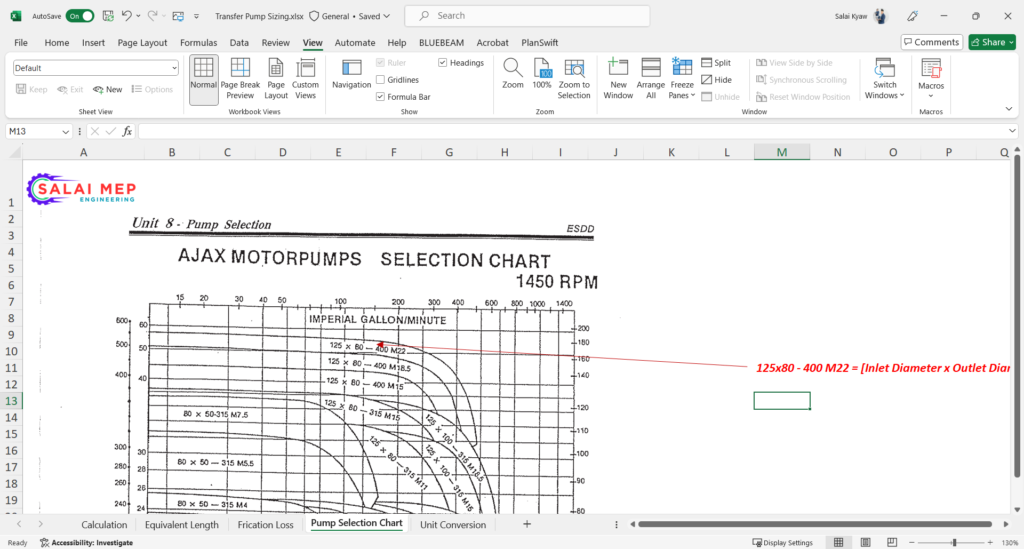
Sizing a transfer pump involves several factors including the flow rate required, the properties of the fluid being pumped, the distance the fluid needs to be transferred, and the characteristics of the piping system. Here’s a basic overview of the steps involved in sizing a transfer pump:
Determine Required Flow Rate
Calculate the flow rate required to transfer the fluid. This can be based on factors such as the volume of fluid to be transferred per unit of time and any required flow rate specifications for the process.
Consider Fluid Properties
Understand the properties of the fluid being pumped. This includes viscosity, density, and any special handling requirements such as shear sensitivity or abrasiveness.
Calculate Total Dynamic Head (TDH)
Determine the total dynamic head (TDH) the pump must overcome. TDH is the total resistance the pump must overcome to move fluid from the source to the destination. It includes elevation changes, friction losses in the piping system, and any additional resistance such as valves or fittings.
Select Pump Type
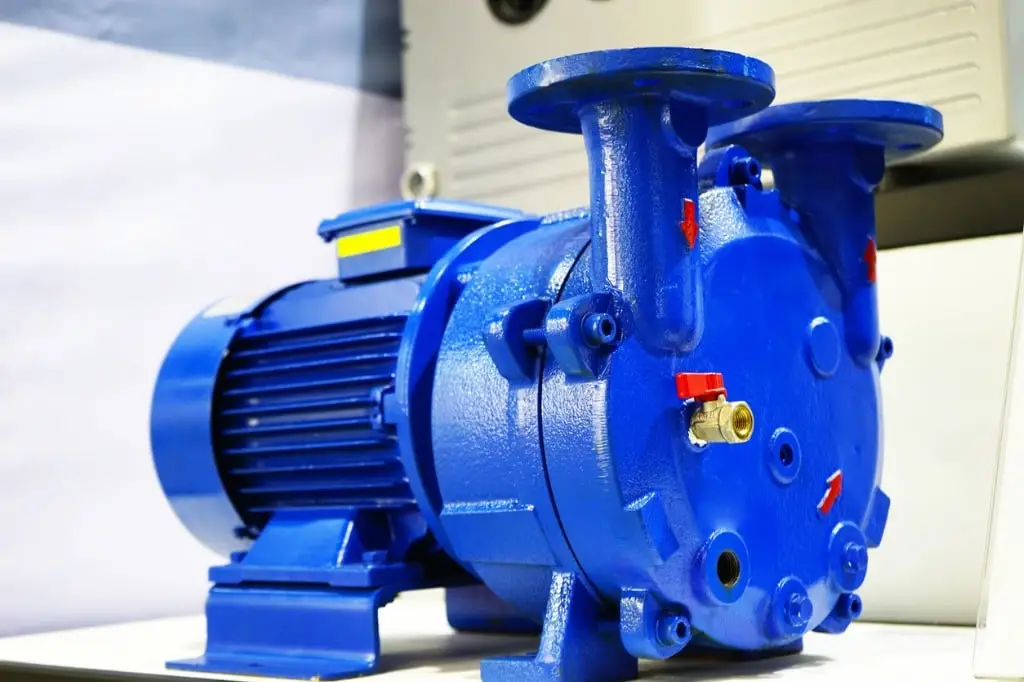
Choose the appropriate type of pump based on the fluid properties, flow rate, and TDH. Common types include centrifugal pumps, positive displacement pumps, and diaphragm pumps.
Refer to Pump Curves:
Obtain pump performance curves from the manufacturer for the selected pump type. These curves show the relationship between flow rate, head, and efficiency for the pump.
Match Pump Performance to System Requirements:
Select a pump that can deliver the required flow rate at the necessary TDH. This is typically done by finding the intersection of the system curve (representing the TDH) and the pumping curve.
Consider Safety Factors for Transfer Pump Size Calculation
It’s often wise to include safety factors to ensure the selected pumping can handle variations in operating conditions or future system changes.
Check NPSHa
If the pump is handling liquids close to their vapor pressure, ensure that the net positive suction head available (NPSHa) exceeds the pump’s requirements to prevent cavitation.
Verify Motor Power
Ensure that the selected pump’s motor has adequate power to meet the requirements of the system.
Installation Considerations
Finally, consider installation factors such as space constraints, piping layout, and any special requirements for mounting or support.
Note: All Password are [“salaimep” or “salaimep.com”]
Transfer Pump Size Calculation Sheet can be download below the link.
Download |Onedrive, Google Drive
Also Download – Booster Pump Size Calculation
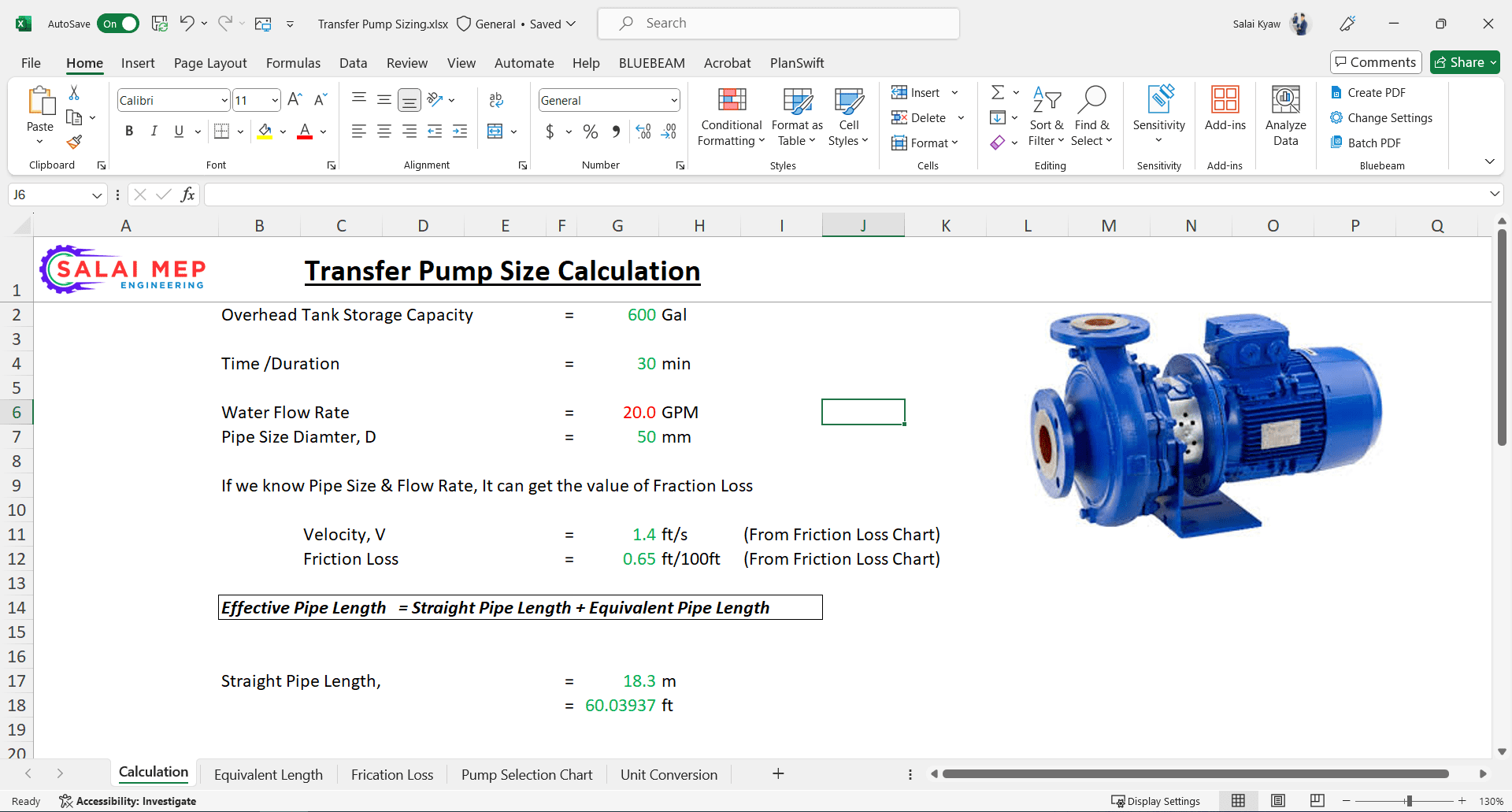
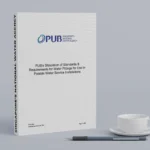






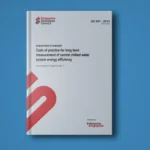

transfer pump calculation
I would like to know pump size calculation